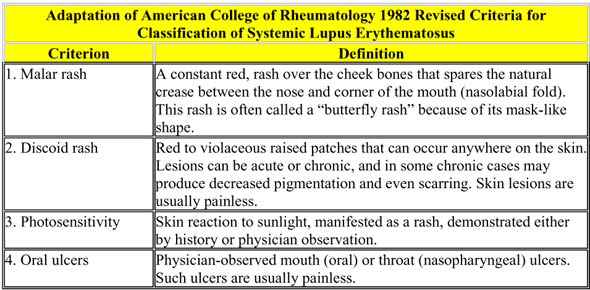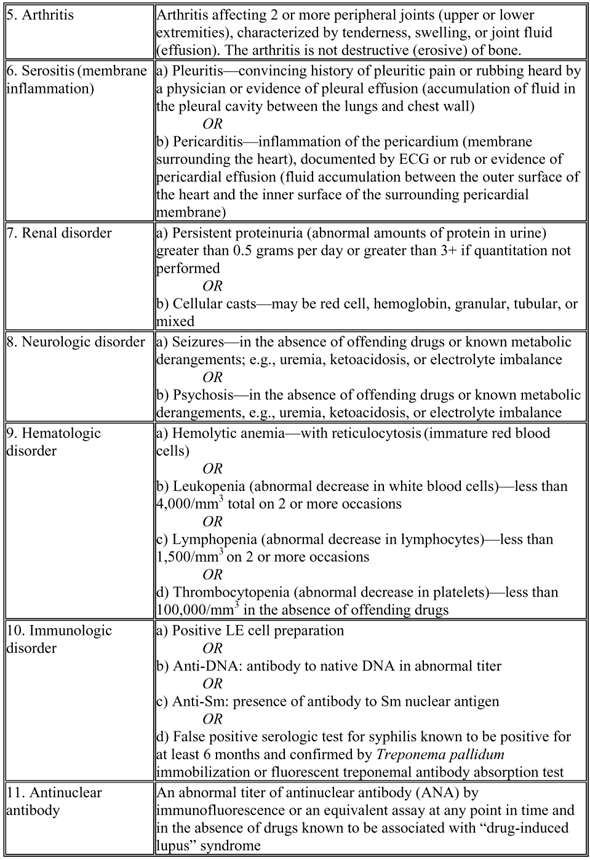Can I Get Social Security Disability Benefits for Lupus?
- How Does the Social Security Administration Decide if I Qualify for Disability Benefits for Lupus?
- About Lupus and Disability
- Winning Social Security Disability Benefits for Lupus by Meeting a Listing
- Residual Functional Capacity Assessment for Lupus
- Getting Your Doctor’s Medical Opinion About What You Can Still Do
How Does the Social Security Administration Decide if I Qualify for Disability Benefits for Lupus?
If you have lupus, Social Security disability benefits may be available. To determine whether you are disabled by lupus, the Social Security Administration first considers whether your lupus is severe enough to meet or equal a listing at Step 3 of the Sequential Evaluation Process. See Winning Social Security Disability Benefits for Lupus by Meeting a Listing. If you meet or equal a listing because of lupus, you are considered disabled. If your lupus is not severe enough to equal or meet a listing, the Social Security Administration must assess your residual functional capacity (RFC) (the work you can still do, despite your lupus), to determine whether you qualify for disability benefits at Step 4 and Step 5 of the Sequential Evaluation Process. See Residual Functional Capacity Assessment for Lupus.
About Lupus and Disability
What Is Lupus?
Systemic lupus erythematosus (SLE) is a chronic inflammatory disease that can affect any organ or body system. It is frequently accompanied by severe fatigue, fever, malaise, and weight loss. SLE is much more common in women, who account for 85% to 90% of the cases.
SLE is a multisystem disease. The immune response against the body’s own tissues can affect any organ, with joint, muscle, ocular, respiratory, cardiovascular, digestive, renal, hematologic, skin, neurological, or mental involvement.
Cause of Lupus
Systemic lupus erythematosus (SLE) is an autoimmune disease. Its cause is not well understood, but it does have a genetic component. Numerous “lupus genes” that influence the probability of developing lupus have been identified. SLE probably appears when a person has a particular combination of genes. Due to the complexity of the disease, a cure for SLE is not likely in the near future.
Severity of Lupus
SLE is unpredictable; it is characterized by exacerbations and improvements. It may follow a benign course and be highly responsive to medication, or it may take a sudden severe course leading to early death despite therapy. Any combination of organ systems can be involved in a particular individual, in any degree of severity.
Lupus may result in:
- Inflammatory arthritis in the joints.
- Muscle inflammation, pain and weakness.
- Inflammation of the eye (uveitis), resulting in pain and blurry vision.
- Respiratory (breathing) problems such as pleuritis, pneumonia, inflammation of the lungs (lupus pneumonitis), and bronchiectasis.
- Heart problems, such as arrhythmias, murmurs, endocarditis, and cardiomyopathy with heart failure.
- Digestive problems such as abnormal contractions of the esophagus (dysmotility) or inflammation of arteries (vasculitis) supplying organs of the gastrointestinal system, resulting in pancreatitis, intestinal obstruction, abdominal pain, ulcers, weight loss, or death of intestinal tissue (intestinal infarction) requiring surgical intervention.
- Kidney problems such as chronic renal failure, which is a common cause of death in SLE.
- Blood (hematologic) problems which can result in decreased platelets, decreased white cells, or decreased red cells (anemia). Decreased platelets increase susceptibility to bleeding. Decreased white cells increase susceptibility to infection. Anemia results in easy fatigability and weakness.
- Skin problems leading to scarring, and the need to avoid direct sunlight (photosensitivity).
- Nervous system involvement resulting in inflammation of the central nervous system—spinal cord and brain.
- Mental disorders (e.g., psychosis, depression, and organic brain syndrome), which arises from nervous system inflammation.
- Arterial inflammation (vasculitis) resulting in impaired blood flow to various organs. Impaired blood flow to the hands and feet can decrease tolerance to cold.
Additional possible abnormalities that may be associated with SLE include:
- Muscle aches (myalgia).
- Joint pain (arthralgia).
- Hair loss (alopecia).
- Fatigue.
- Fever.
- Enlarged lymph nodes (lymphadenopathy).
- Enlarged spleen (splenomegaly).
- Enlarged liver (hepatomegaly).
- Sensitivity to cold (Raynaud’s phenomenon).
- Hypertension.
Diagnostic Criteria Required by the Social Security Administration
There are no universally agreed-upon criteria for making a diagnosis of SLE. The table below shows the diagnostic criteria required by the Social Security Administration.



Treatment for Lupus
Since SLE is incurable, treatment is based on drug therapy that will control symptoms and progression of the disease. Kidney failure is a major cause of death and kidney function must be closely monitored.
Therapy for lupus is based on suppressing the immune system. Systemic corticostroid drugs like prednisone can be highly effective, but their use is limited by potential side-effects (e.g., hypertension, obesity, poor wound healing, osteoporosis, osteonecrosis, cataracts). Methotrexate is another immunosuppressive drug that is useful in treating SLE. The anti-malarial drug plaquenil is often capable of keeping SLE under control.
Specific medications may be required for particular problems like hypertension, depression, and skin lesions.
Every case is different. Some people respond rapidly to maintenance therapy with plaquenil and have minimal symptoms. Others are not so fortunate.
Continue to Winning Social Security Disability Benefits for Lupus by Meeting a Listing.

